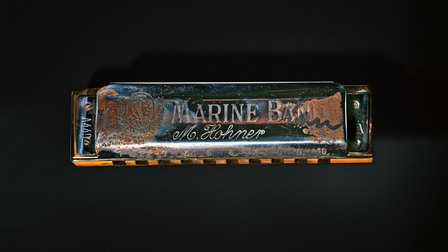One in a Million
Although produced millions of times, these items are unique: photographer Henry Leutwyler documents everyday objects that have become something special because they’ve been used to accomplish something special. The mundane paintbrush, for example, with which Andy Warhol created world-famous works of art. Or Jimi Hendrix’s electric guitar. Or the pencil that Ferdinand Alexander
1935–2012
Ferdinand Alexander
1889–1977
Charlie Chaplin’s cane. This cane was one of the central props used in the signature role of the Tramp played by the actor and director, who was born in London on April 16, 1889.
1889–1950
Vaslav Nijinsky’s ballet shoes. Nijinsky, who was born in Kiev on March 12, 1889, used these shoes for the premiere of Le Spectre de la Rose at the theater in Monte Carlo on April 19, 1911. Blood in the heels attests to the difficulty of the dance.
1900–1978
Adi Dassler’s tools. Born in the Bavarian town of Herzogenaurach on November 3, 1900, Dassler still carried around this set of tools, which he had used to develop his first cleats, long after his company Adidas had become a renowned international manufacturer of sporting goods.
1942–1970
Jimi Hendrix’s electric guitar. This Fender Mustang in Daytona Red was specially made for Hendrix, a singer, composer, and left-handed guitarist born in Seattle, Washington, on November 27, 1942. It was used to record his second studio album, Axis: Bold as Love.
1928–1987
Andy Warhol’s paintbrush . Warhol was a designer, graphic artist, and filmmaker who founded the pop art movement and was born in Pittsburgh, Pennsylvania, on August 6, 1928. He used this simple painter’s tool to create great art.
1935–1977
Elvis Presley’s microphone. Born in Tupelo, Mississippi, on January 8, 1935, the musician and actor used this microphone for his studio recordings.
Henry Leutwyler
![[+]](https://staging.www.porsche.com/filestore/image/multimedia/none/christophorus-issue382-article11-content-02/normal/8b801d9b-572a-11e7-bfe2-0019999cd470/porsche-normal.jpg)
“Objects can talk. They say a lot about their owners, and I photograph them as if they were people.”
The New York–based photographer Henry Leutwyler doesn’t present images of mere objects in his book entitled Document; they’re testaments to our time: Bob Dylan’s harmonica, Jimi Hendrix’s guitar, Charlie Chaplin’s cane, and a writing utensil that belonged to Ferdinand Alexander
Photos by Henry Leutwyler
![[+]](https://staging.www.porsche.com/filestore/image/multimedia/none/christophorus-issue382-article11-margin-01/normal/9f38ea43-572a-11e7-bfe2-0019999cd470/porsche-normal.jpg)
![[+]](https://staging.www.porsche.com/filestore/image/multimedia/none/christophorus-issue382-article11-margin-02/normal/be8df68c-5ccd-11e7-9717-0019999cd470/porsche-normal.jpg)
![[+]](https://staging.www.porsche.com/filestore/image/multimedia/none/christophorus-issue382-article11-margin-03/normal/be8df68d-5ccd-11e7-9717-0019999cd470/porsche-normal.jpg)
![[+]](https://staging.www.porsche.com/filestore/image/multimedia/none/christophorus-issue382-article11-margin-04/normal/c6a74794-5ccd-11e7-9717-0019999cd470/porsche-normal.jpg)
![[+]](https://staging.www.porsche.com/filestore/image/multimedia/none/christophorus-issue382-article11-margin-05/normal/cf295547-5ccd-11e7-9717-0019999cd470/porsche-normal.jpg)
![[+]](https://staging.www.porsche.com/filestore/image/multimedia/none/christophorus-issue382-article11-margin-06/normal/cf295549-5ccd-11e7-9717-0019999cd470/porsche-normal.jpg)
![[+]](https://staging.www.porsche.com/filestore/image/multimedia/none/christophorus-issue382-article11-margin-07/normal/abc40e68-572a-11e7-bfe2-0019999cd470/porsche-normal.jpg)








